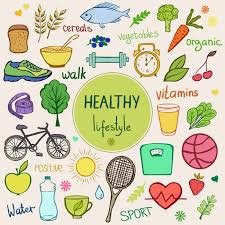Decoding Food Additives and Preservatives: A Comprehensive Guide
Navigating the modern food landscape requires understanding the role of food additives and preservatives. This in-depth guide clarifies their functions, safety profiles, and impact on consumer health and choices, empowering informed decision-making.
Defining Food Additives and Preservatives: A Clear Distinction
Food additives encompass any substance intentionally incorporated during food processing or preparation. Their applications are vast, enhancing flavor, texture, visual appeal, and extending shelf life. Preservatives, a specialized category of additives, primarily combat spoilage, inhibiting microbial growth and extending product longevity, thereby reducing the risk of foodborne illnesses. This crucial role ensures food safety and maintains palatability during transport and distribution.
The Indispensable Role of Additives and Preservatives in Food Production
These substances are integral to maintaining food quality and safety. They effectively combat bacterial proliferation, oxidation, and spoilage, ensuring food retains its appealing characteristics and remains safe for consumption over an extended period. This is particularly critical for global food distribution networks, facilitating access to a diverse and readily available food supply.
Exploring Common Types: A Diverse Range of Additives
The spectrum of food additives is extensive, each serving a specific purpose. Here are a few notable examples:
- Artificial Sweeteners: Substances like aspartame and sucralose, frequently used in sugar-free and low-calorie products to impart sweetness without the caloric impact of sugar.
- Coloring Agents: Compounds such as tartrazine and cochineal extract, which enhance the visual attractiveness of food products, appealing to consumer preferences and expectations.
- Antioxidants: Vitamins like ascorbic acid (Vitamin C) play a vital role in preventing the oxidation of fats and oils, preserving the freshness, flavor, and color integrity of food.
- Emulsifiers: Ingredients including lecithin and mono- and diglycerides, crucial for stabilizing and homogenizing food products, maintaining a consistent texture and preventing separation of components.
- Preservatives: Substances like sodium benzoate and potassium sorbate, effective in inhibiting the growth of harmful bacteria and fungi, extending shelf life and minimizing spoilage.
Addressing Safety Concerns: Regulatory Oversight and Individual Sensitivities
Stringent regulatory bodies worldwide meticulously oversee the use of food additives and preservatives, subjecting them to rigorous testing and evaluation to guarantee compliance with strict health standards before approval. While generally deemed safe, individual sensitivities and allergies underscore the importance of careful label reading. Consumers should always check labels for potential allergens or ingredients of concern.
Health Implications: A Balanced Perspective on Additive Consumption
Although concerns regarding potential adverse health effects exist, extensive scientific research supports the notion that moderate consumption of approved additives, within established guidelines, poses minimal health risks. However, maintaining a balanced, varied diet rich in whole, unprocessed foods and minimizing the intake of heavily processed foods remains paramount for optimal health.
Natural vs. Synthetic Additives: A Source-Based Differentiation
Additives originate from both natural and synthetic sources. Natural additives are derived from natural sources such as plants, animals, or minerals, while synthetic additives are produced through chemical processes. Regardless of origin, both categories are rigorously assessed to meet safety standards and regulations.
Deciphering Food Labels: Empowering Informed Choices
Understanding food labels is crucial for making well-informed consumer choices. Additives are identified by their specific names or E-numbers (European Union assigned codes for approved additives). Familiarity with these designations allows consumers to actively participate in their food selection process.
Strategies for Minimizing Additive Intake: Practical Approaches
While generally considered safe within recommended limits, minimizing additive intake is achievable. Prioritizing fresh, whole foods and cooking from scratch significantly reduces exposure to potentially unnecessary additives, allowing for greater control over ingredients and overall nutritional quality.
Additive Content in Processed Foods: A Comparative Analysis
Processed foods, including canned goods, frozen meals, and many snack items, typically contain higher concentrations of additives compared to fresh, minimally processed foods. Maintaining a balanced diet that incorporates both fresh and minimally processed foods is essential for a comprehensive approach to nutrition and well-being.
The Preservation Power of Preservatives: Extending Food Shelf Life
Preservatives play a significant role in extending the shelf life of food products. By effectively inhibiting the growth of bacteria, yeasts, and molds, they maintain food quality, safety, and prevent spoilage, leading to reduced food waste and efficient distribution networks.
Seeking Alternatives: Exploring Natural Options
For consumers seeking to reduce their intake of synthetic additives, several natural alternatives exist. Utilizing natural herbs and spices for flavor enhancement, and opting for organic, additive-free products, provide viable and healthier options.
The Importance of Balanced and Moderate Consumption
A balanced and moderate approach to food consumption is fundamental to long-term health. While additives are generally safe when consumed in moderation, excessive consumption of highly processed foods can negatively impact overall well-being. A diverse and nutritious diet, rich in whole foods, remains the cornerstone of a healthy lifestyle.
Global Perspectives on Food Preservation: A Cultural Lens
Different cultures have traditionally employed diverse preservation methods. Asian cuisines often utilize natural preservatives such as soy sauce or fermented products like kimchi. Mediterranean cuisines leverage natural antioxidants found in olive oil and herbs. This demonstrates the adaptability and cultural diversity in food preservation techniques across various regions.
The Future of Food Additives and Preservation: Evolving Trends
The food industry continuously adapts to changing consumer preferences, demonstrating a growing demand for healthier and more natural options. The future likely will involve an increased emphasis on "clean label" additives and innovative preservation techniques that prioritize both safety and consumer preferences for cleaner, healthier food choices.
Final Reflections: Informed Choices for a Healthier Lifestyle
A thorough understanding of food additives and preservatives empowers consumers to make informed and responsible choices. While widely used in food production, strict regulatory oversight and safety protocols ensure their safe consumption. Balancing convenience with fresh, minimally processed foods, while remaining cognizant of individual sensitivities, forms the foundation of a healthier and more mindful approach to nutrition.




